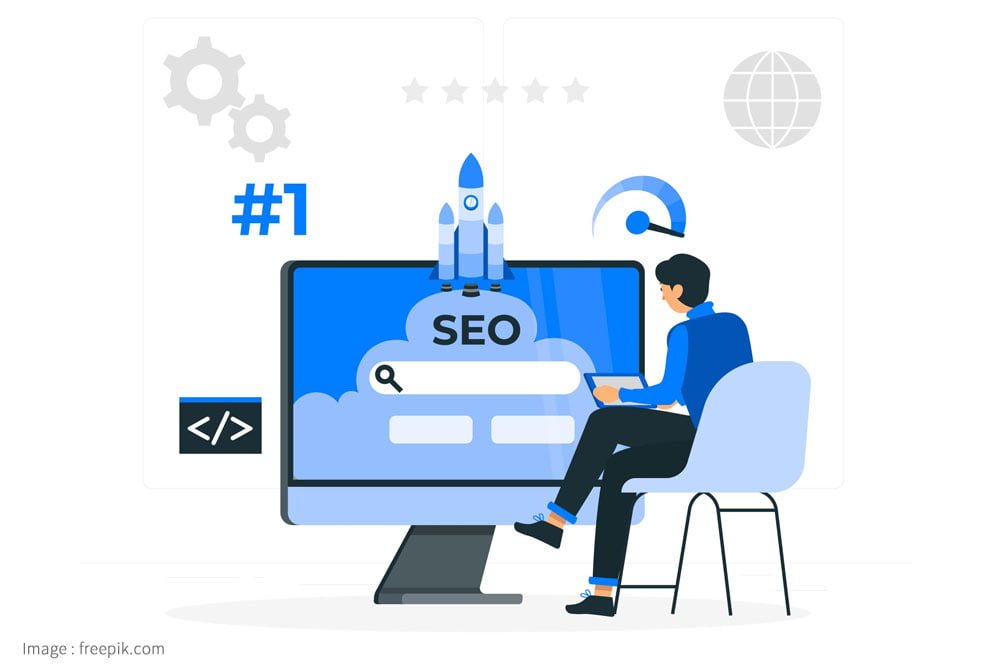In order to discuss search engine optimization, henceforth referred to as SEO, it is first necessary to understand what the purpose of a search engine is. There are several search engines, but the one we shall use as an example is Google, which takes over 90% of the world’s search engine traffic.
- Globally: Google dominates the search engine market with a massive 91.61% share as of December 2023 (source: Statcounter). Its closest competitor, Bing, comes in at a distant second with only 3.38%.
- On desktops: The picture is similar, with Google holding an 83.49% share compared to Bing’s 9.19% (source: Statista).
- On mobile: Google’s dominance is even stronger, reaching 92.63% of the market share compared to Bing’s 2.79% (source: Statcounter).
Google’s customer is not the person that advertises on the search engine using a service such as Google Adwords, but is the person that uses the search engine to find information. When somebody is seeking information they will enter a search term into Google’s search box known as a ‘keyword’ – a keyword can be a single word, such as ‘cats’ or a phrase such as ‘cheapest cat baskets.’
Google will then do its very best to provide that customer with individual web pages offering the best possible information that relates to that keyword – with the most relevance to the keyword and with the minimum of duplication of information. To achieve that, Google uses mathematical statistical formulae known as algorithms.
These algorithms detect and measure several predetermined factors relating to each web page. Among these is a comparison between the character strings used in the keyword employed by the Google user and those used on your web page. According to Google there are over 200 factors taken into account in the listing position of any web page, although a high degree of correspondence between your keywords and those used in the search is very important.
SEO (Search Engine Optimization) is given a very high weighting in these calculations, and by using good SEO techniques it is possible to maximize the listing position of your web pages for selected keywords. So what is SEO and how to you apply it to your web pages?
1. On-Page SEO
This means that the optimization is carried out on your web page. Each page should be optimized for only one keyword, so if you have pages offering cat baskets, cat food, etc, they should be optimized for these terms. One page for ‘cat baskets’ and another for ‘cat foods’ – never optimize one page for two keywords.
The Head section of your page HTML contains certain Meta data including the Title tag and the description Meta tag. These should contain your page keyword. In the Body section, your main page title should be the same as your Title tag, and be enclosed within H1 HTML tags. Subheadings should be enclosed within H2 tags.
Your keyword should comprise no more than 1% of the text on the page, and should be used once in the initial 100 characters and also in the final paragraph. The remainder of the text should include a high content of vocabulary that is semantically related to the keyword. In the ‘cat’ example these may be feline, kittens, litter, pussy, etc.
There are several other on-page SEO techniques you can use to maximize your listing position, and it is essential to use as many as possible for the highest possible listing. However, SEO does not just end there – there are also off-page techniques, including your linking strategy.
2. Off-Page SEO
Google regards links to your web page from other related web pages to be an indication of the relevance and authority of your web page concerning the topic of the keyword. You should try to get links back to your web pages from related pages elsewhere. One way to achieve this is to write an article on the topic of your web page, and submit that to article directories. Each publication gives you a link back to your page from your article that relates to the same topic – that is because the articles include an ‘author’s resource’ that provides a link back to your web page.
Other off-page links can come from social networking and bookmarking sites, blogs, Squidoo lenses, YouTube videos, and other sources which all combine to persuade the Google algorithms to give your page a high score against the keyword used by Google’s customers. Video content is 50 times more likely to drive organic search results compared to plain text.
That gives you a high search engine results position (SERP), so that when the results page comes up on that Google user’s screen your page will be listed on the first page of 10 results, and as close to #1 as possible.
Why is SEO Important
Google gets billions of visits each day, and many of these could be looking for the information, products, or services that you provide. If you fail to optimize your individual web pages, you will be hiding your website from a great deal of potential visitors. It would be like having a mall store, but shutting your doors at opening time and relying on word of mouth for your sales.
Unless you are able to apply a professional standard of SEO to every page on your website, you could be losing a great deal of business. It is not easy to learn the intricacies of search engine optimization, and the brief explanation above only scratches the surface of the topic.
If you want people to visit your web pages, you should make sure that each is optimized with the maximum level of SEO possible, and that each page is also attractive enough to keep your visitors when they do arrive. Few people are sufficiently knowledgeable about SEO to be able to do this, and are leaving a great deal of money on the table because of it.
Do not let that be you – either take the time to learn about SEO or allow an expert to look after it for you. Google is too important to ignore!
Keep it Fresh and up to Date
It is important to keep your content fresh and to keep up to date with Google’s latest algorithm updates. For example, the most recent Penguin algorithm update punishes those sites that do not use original content, but that generate content using software rather than manual writing. Spun articles and content generated from snippets of other web page text are now being dropped from Google’s listings.
You must keep up with all of these Google updates if wish to maintain a high ranking and enjoy all the extra free traffic that this brings. If you fail to do so, then you can expect to drop down the rankings, and your traffic, sales and income will drop with it. If you are unable to keep up to date then consider using a third party to help.
A good web developer will not only develop your website and look after your SEO, but also make sure that your entire website conforms to Google’s latest algorithm updates.
Some interesting facts
Search Engine & User Behavior:
- 68% of online experiences begin with a search engine (BrightEdge, 2023). So, optimizing for organic search visibility truly matters!
- 46% of all Google searches are seeking local information.
- Organic search drives 53.3% of all website traffic, making it a dominant source of visitors (BrightEdge, 2023). You can’t ignore the power of unpaid search!
- Google (including Google Images) holds a whopping 92.58% market share in search engines (SparkToro, 2023). Knowing Google’s algorithms and best practices is crucial.
- Mobile users account for 61% of organic search visits (Statista, 2023). Your website needs to be mobile-friendly and optimized for smaller screens.
- 75% of smartphone users expect immediate information when using their phones (Think With Google, 2019). Page speed and user experience are vital on mobile.
SEO Performance & Impact:
- The #1 Google search result gets 10x more clicks than the 10th result (Backlinko, 2023). Aiming for the top spot is key for maximum visibility.
- Less than 1% of searchers click on the second page of Google results (Backlinko, 2023). Ranking in the top 10 is essential for getting clicks.
- SEO drives 1,000%+ more traffic than organic social media (BrightEdge, 2023). Investing in SEO yields higher returns compared to social media platforms.
- 60% of marketers say SEO generates the highest quality leads (HubSpot, 2023). SEO attracts more qualified visitors likely to convert.
- SEO leads have a 14.6% close rate, compared to 6.1% for outbound leads (HubSpot, 2023). Organic traffic leads to better conversions.
Content & Technical SEO:
- The average page age on Google’s first page is over 2 years old (Backlinko, 2023). Regularly updating and promoting older content pays off.
- 95% of pages have zero backlinks (On The Map Marketing, 2023). Building high-quality backlinks is crucial for authority and rankings.
- 12.29% of search queries have featured snippets displayed in search results (Ahrefs, 2023). Optimizing for featured snippets boosts visibility. Pages with featured snippets witness a significant increase in click-through rates (CTR).
- 39% of purchasers are influenced by a relevant search (Think With Google, 2023). Targeting keyword intent through content is essential.
- Images can be used to target specific keywords and increase visibility in image search results (Agility PR Solutions, 2023). Don’t forget to optimize your images!

